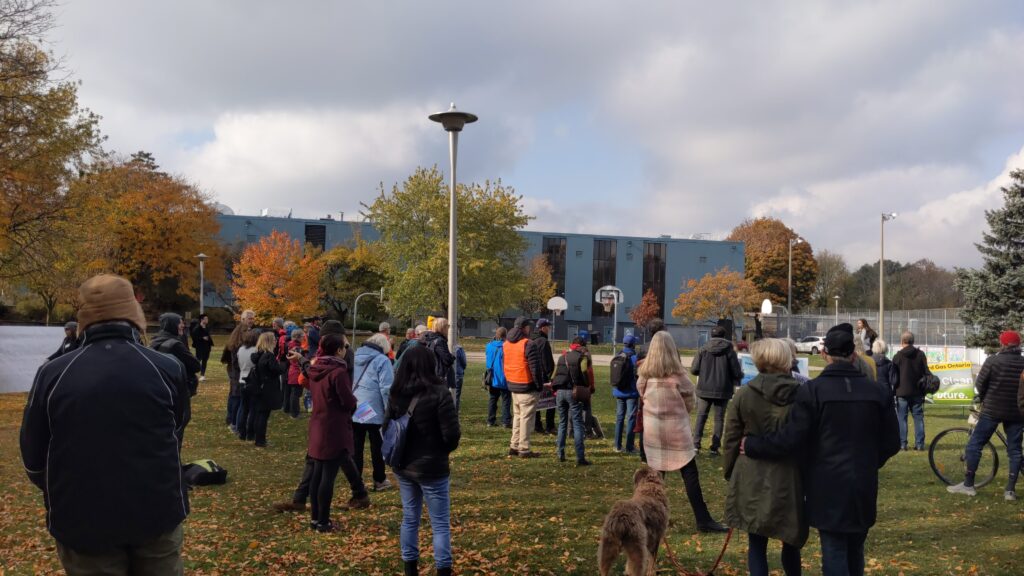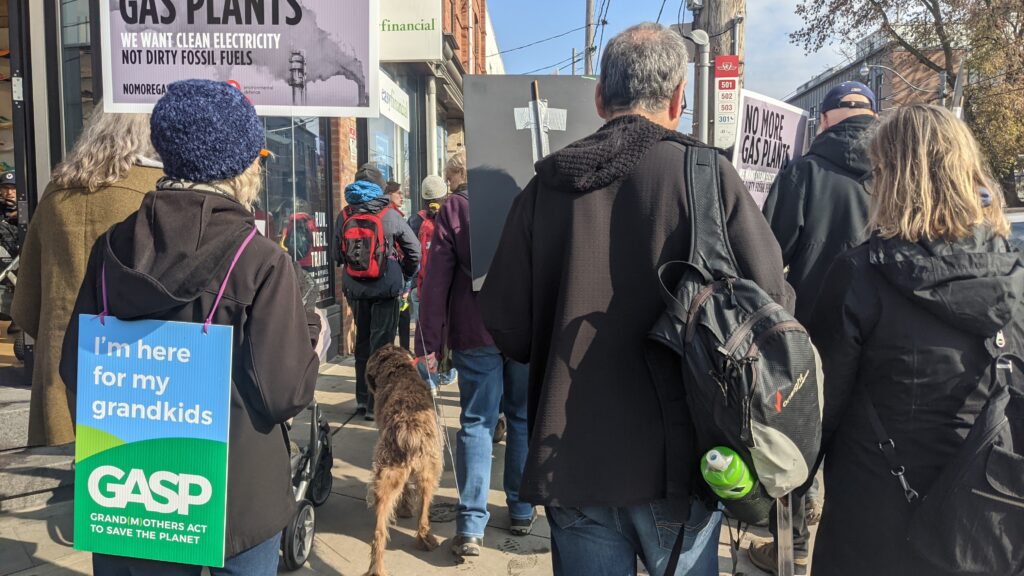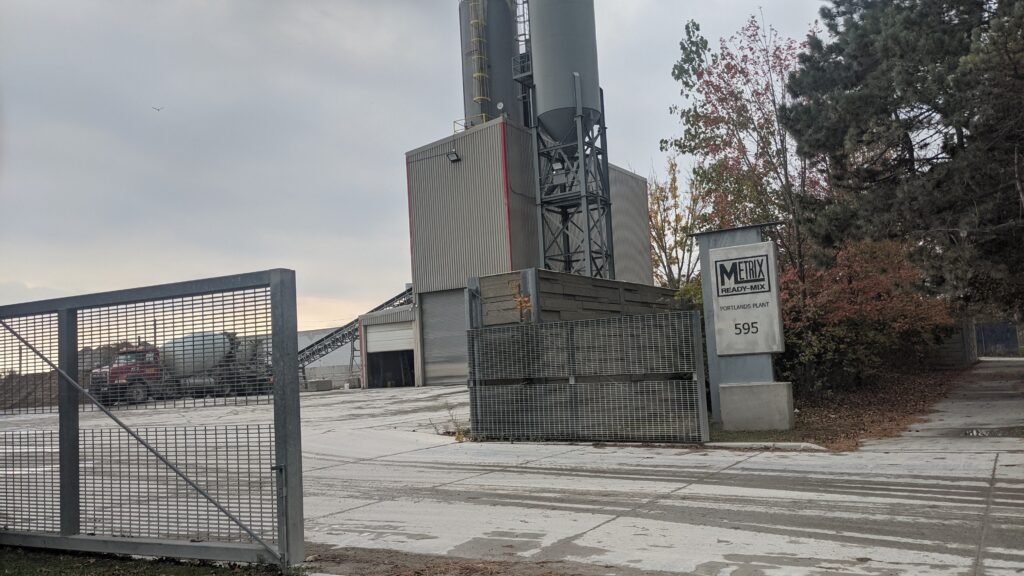By Vihaan Bhatnagar
If you’re at Union station, walk to Yonge and King Street. Take the 503 or 501D going east. Get off at the Queen St, Jones Avenue stop and walk north for a few minutes. You are now in Leslieville.
There’s a small basketball court next to Jimmie Simpson Park, where on sunny days you can usually find someone playing. There’s also a small baseball park right next to it. If you go east for a couple of minutes you’ll also find a Value Village, after you pass a local Mexican restaurant. You could get lunch or a drink there if you’d like.
While you’re there you might as well go south to 470 Unwin Ave and take a look at the Portlands Power Plant. If you went there in July 2023, it would have been churning out electricity for an average of 21 hours a day.
On October 1, 2023, the Toronto Star broke the story that despite the fact that the Portlands Power Plant which was initially built as a peaker plant, actually ran for nearly 21 hours a day for the entire summer (A peaker plant is a term used for power plants that are supposed to run only during periods of high power demand). The three gas plants in the GTA – the Portlands Energy Centre, the Goreway Power Station and the Halton Hills Generating Station were all operating for an average of 14 hours and 40 minutes a day.
On Oct. 5, 2023, Atura Power, the publicly owned company operating the plant, announced in a public meeting that the Portlands Plant would be getting some upgrades to increase its generating capacity. These upgrades would allow the plant to run more efficiently. It was left unclear, however, whether the plant would be operated more after the upgrades were finished, which might very well cancel out these efficiencies and increase the emissions of this plant, which in 2021 were 618,211 tonnes.



As of early 2024, Ontario has the highest number of natural gas plants of any Canadian province, sitting uncomfortably at 12. Natural gas plants emit gases such as carbon dioxide, methane and nitrogen oxide, among others. These gases are harmful to the environment and to human health, and they become more harmful the longer they’re allowed to continue. Environmental advocates have spent years trying to ask the government this question: Why are we making new gas plants when we already have too many?
The Portlands plant has been controversial since its inception. Peter Tabuns remembers when it was proposed in 2005. He is the Member of the Ontario Provincial Parliament for Toronto-Danforth since 2006. Tabuns won the 2006 by-election for the Toronto-Danforth, and the gas plant was one of the key issues. According to him, even back then the power plant was understood to be unpopular with residents of the area.
Jack Gibbons, the Chair of the Ontario Clean Air Alliance (OCAA), as well as a former Toronto hydro Commissioner, says that the upgrades will make the Portlands’ energy output more efficient. But if the output is increased, the emissions will remain the same and so will the environmental effects.
Until 1983, 470 Unwin Ave used to house the Hearn Generating Station, a coal plant that Angela Bischoff, director of the OCAA, says gave Toronto many of its smog days. The Hearn Generating Station was converted into a natural gas plant in 1971, which it remained as until 1983 when it was decommissioned.
According to Gibbons, the OCAA supported the transition from coal to natural gas, simply because at the time, there was no better alternative. The transition saw a dramatic decrease in emissions including nitrate oxide, mercury, lead, fine particulate matter emissions. But now, Gibbons says that now it’s time to transition away from natural gas to more renewable energy sources.
But that brings its own challenges in more than one way, shape, or form.
For one, the government needs to decide to make the change. Since October, there have been at least five new proposals relating to gas plants in Ontario. Thorold, Loyalist, and Halton Hills rejected the proposals. The Kingston Council approved blanket municipal support for energy projects, but gas plant projects were excluded from this. Napanee deferred the decision to expand the Napanee Generating Station until the town was offered annual payments of $400,000 by Ontario Power Generation.
Tabuns says that Napanee might see emissions rise along with health concerns as the Napanee Generating Station is used more in the future. Whether that happens, we will see.
Gibbons criticised the actions of the provincial government, and spoke about their past when it comes to environmental issues.
“It’s like the Greenbelt. Doug Ford is doing what’s best for certain large well connected corporations, but not what’s best for the people of Ontario,” he said.
The Ontario Ministry of Energy, upon being asked for a comment on the proposals to bring more natural gas plants to Ontario, has not responded yet. This is after being referred to them by the Ministry of the Environment, Conservation and Parks and multiple emails over the span of a couple weeks.
The other issue with transitioning to renewable energy sources is that politicians as well as some citizens don’t want it. Joyce McLean used to work for Toronto Hydro as an Energy/Environmental consultant, after working for Greenpeace for 10 years and running her own firm for a few years. She says her firm tried to test whether a wind farm near the Scarborough Bluffs would be viable, and she’ll never forget a homeowner coming up to her, getting in her personal space and yelling at her saying, “Oh you’re going to ruin my property value.” Some time after this, Brad Duguid, the Ontario Minister of Energy at the time, canned the entire project. This was because people from his riding, homeowners in Scarborough, didn’t want to look at wind turbines, even though they would be around three kilometers away from shore. It was a small group, but with a lot of sway.
Oil and natural gas made up about six per cent of Ontario’s energy supply in 2019. In Quebec, that number was 0.1 per cent. Quebec’s energy supply consists of 94 per cent hydroelectricity, and five per cent wind, making their energy grid 99 per cent renewable. While six per cent may not seem like a big number, it’s big to those that live near these plants, and it’s huge compared to 0.1 per cent.
There’s been some progress. The Ontario government back in August made a deal with the Quebec government to trade up to 600 megawatts of energy each year. But it could be better. According to McLean, the Ontario government has been able to do this for years, and it could also follow in Quebec’s footsteps, but Ontario has steadfastly refused to do that. She says long-time advocates for renewables, a term that includes her, have never understood that.
McLean says one of the reasons why there isn’t more of a demand from the public about renewable energy is because the electricity industry doesn’t like communicating with the public, so they use what has been dubbed “electricity speak”. The average consumer doesn’t know this language, but it’s also the consumer’s responsibility to try and understand how the system works, but most people don’t.
Another issue is Ontario’s increasing power demand. Atura Power said in an email to me back in November that the upgrades to the Portlands Power Plant were required to ensure continued reliability of the electricity grid. But according to advocates for renewable energy like McLean and Bischoff, there’s better ways to go about it.
“There is no reason for us to be ramping up gas, which causes air pollution and climate change, when we have lower cost, cleaner alternatives, namely wind, water and solar. We could put solar panels on the great lakes. We could install bi-directional batteries on our electric vehicles. We could be putting solar panels on every rooftop in Toronto,” said Bischoff, “That’s the future. That’s where the world is going and that’s where we want to go in Toronto.”
